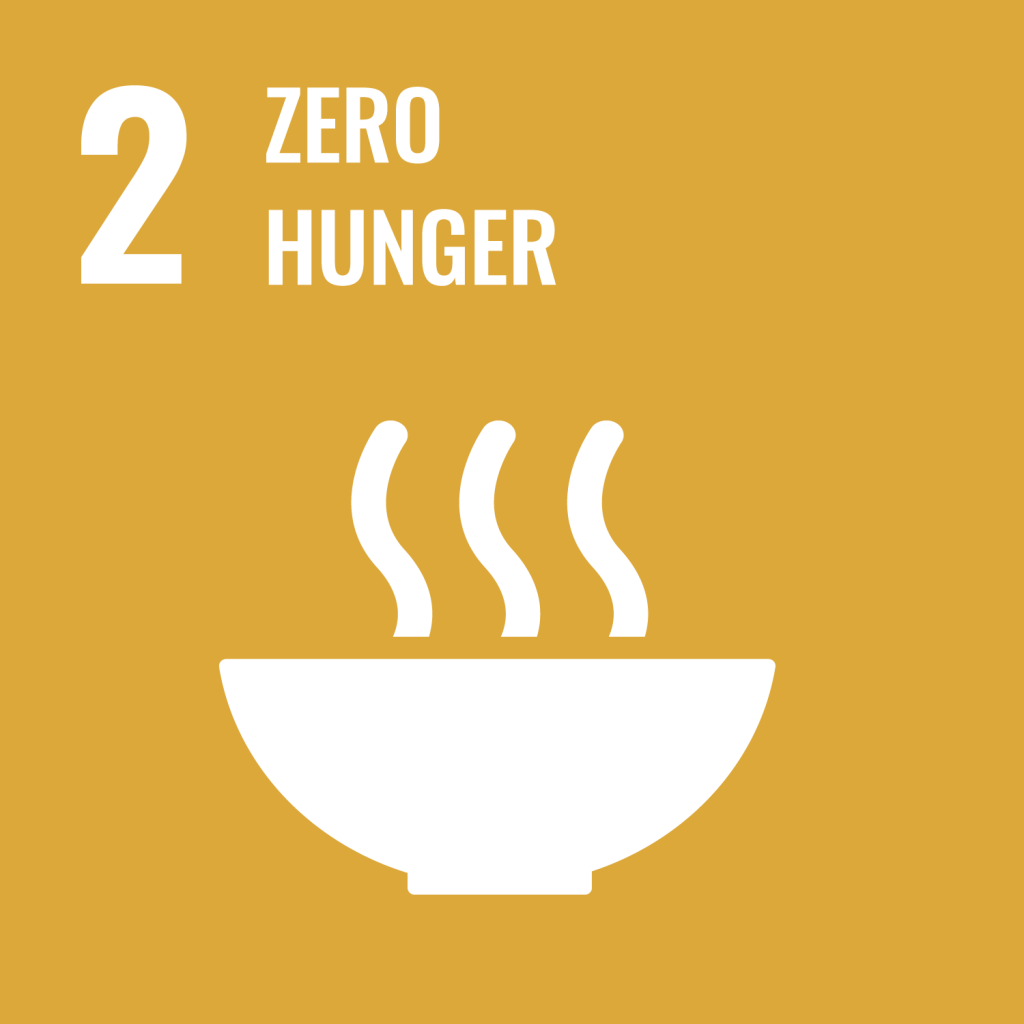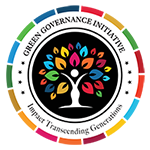GOAL 2:
ZERO HUNGER

Globally, the proportion of undernourished people in the developing regions has fallen by almost half since 1990, from 23.3% in 1990-1992 to 12.9% in 2014-2016. However, one in nine people in the world today (795 million) are still undernourished. The vast majority of the world’s hungry people live in developing countries, where 12.9% of the population is undernourished. Asia is the continent with the hungriest people – two-thirds of the total.
The percentage in southern Asia has fallen in recent years, but in western Asia it has increased slightly. SubSaharan Africa is the region with the highest prevalence (percentage of population) of hunger. About one person in four there is undernourished. Poor nutrition causes nearly half (45%) of deaths in children under five – 3.1 million children each year. One in four of the world’s children suffer stunted growth. In developing countries the proportion rises to one in three. 66 million primary school-age children in developing countries attend classes hungry, with 23 million in Africa alone. Agriculture is the single largest employer in the world, providing livelihoods for 40% of today’s global population.
It is the largest source of income and jobs for poor rural households. 500 million small farms worldwide,most still rain fed, provide up to 80% of food consumed in a large part of the developing world. Investing in smallholder farmers is an important way to increase food security and nutrition for the poorest, as well as food production for local and global markets. In 1990, 53% of all Indian children were malnourished. In 2015, malnourishment declined to 40%.
Fact And Figures
Hunger is not merely missing a meal for millions of people around the world, but a debili - tating crisis that takes a toll on their livelihood, health and well-being. Eradicating hunger is necessary for uplifting this vast proportion of the population from abject poverty and ensuring their development. Around 821 million persons (one in nine people) in the world, do not have access to sufficient food to lead a healthy and active life, with poor nutrition causing almost half of deaths in children under five. 4 The fact that world hunger is on the rise consecutively for three years now is a matter of disquiet. It is important to emphasise that hunger is a problem not because there is not enough food for everyone. The world produces more than enough food to feed everyone on the planet. But millions of people around the world are simply too poor to be able to buy food. They also lack the resources to grow their food, such as arable land and the means to harvest, process, and store food.
Government spending on agriculture worldwide has declined by 37 per cent as compared to the contribution of agriculture to economy and aid to agriculture in developing countries plummeted from 25 per cent in mid-1980s to merely 5 per cent in 2017. Conflicts around the world, including wars between countries, civil wars within countries, terrorism, and other violence, displace millions of people leading to increased hunger and malnourishment. Hunger creates a vicious cycle of poverty and underdevelopment.
821 million
in the world, do not have access to sufficient food to lead a healthy and active life
37%
decline in government spending on agriculture worldwide
40%
people malnourished in 2015

Target
2.1 By 2030, end hunger and ensure access by all people, in particular the poor and people in vulnerable situations,including infants, to safe, nutritious and sufficient food all year round
2.2 By 2030, end all forms of malnutrition, including achieving, by 2025, the internationally agreed targets on stunting and wasting in children under 5 years of age, and address the nutritional needs of adolescent girls, pregnant and lactating women and older persons
2.3 By 2030, double the agricultural productivity and incomes of small scale food producers, in particular women,indigenous peoples, family farmers, pastoralists and fishers,including through secure and equal access to land, other productive resources and inputs, knowledge, financial services, markets and opportunities for value addition and non-farm employment
2.4 By 2030, ensure sustainable food production systems and implement resilient agricultural practices that increase productivity and production, that help maintain ecosystems, that strengthen capacity for adaptation to climate change, extreme weather, drought, flooding and other disasters and that progressively improve land and soil quality
2.5 EBy 2020, maintain the genetic diversity of seeds,cultivated plants and farmed and domesticated animals and their related wild species, including through soundly managed and diversified seed and plant banks at the national, regional and international levels, and promote access to and fair and equitable sharing of benefits arising from the utilization of genetic resources and associated traditional knowledge, as internationally agreed
2.a Increase investment, including through enhanced international cooperation, in rural infrastructure, agricultural research and extension services, technology development and plant and livestock gene banks in order to enhance agricultural productive capacity in developing countries, in particular least developed countries
2.b Correct and prevent trade restrictions and distortions in world agricultural markets, including by the parallel elimination of all forms of agricultural export subsidies and all export measures with equivalent effect, in accordance with the mandate of the Doha Development Round.
2.c Adopt measures to ensure the proper functioning of food commodity markets and their derivatives and facilitate timely access to market information, including on food reserves, in order to help limit extreme food price volatility
Our Team


Sanah Dewan
Team Lead SDG 2
